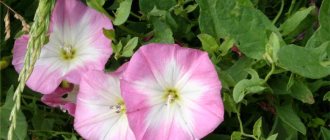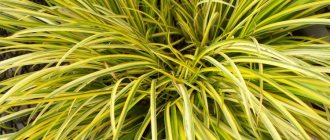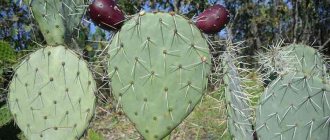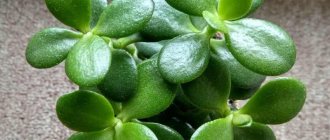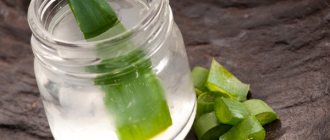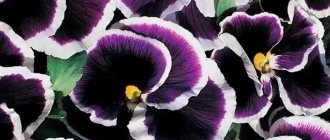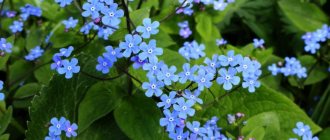Many people have heard about such a flower as the violet and even know what it looks like.
But not many people know that it is not only a delicate flower with a fragrant aroma, but also a medicinal plant that helps against many diseases.
There are more than 500 species in the world. Here you can find:
- field;
- tricolor;
- fragrant.
The difference between them is in the color and shape of the petals.
Violet has been used as a medicinal plant since ancient times.
But in order for it to be used not only as a garden decoration, but also as a medicine, it is necessary to study its positive and negative properties.
Description of the violet tricolor plant
Tricolor violet or pansy (lat. Víola tricolor) is a herbaceous plant common in Europe and temperate regions of Asia. The plant belongs to the species of the genus Violet of the Violet family.
The popular name is Ivan-da-Marya, but plants of other genera are also called this way, for example, the oak grove (Melampyrum nemorosum) from the Norichnikov family. Other popular names for the plant: brother-and-sister, moths, field brothers, half-flower, axes, three-flowered.
In gardening, pansies are also often called the hybrid Wittrock violet (Viola x wittrockiana Gams ex Hegi), which has larger, brighter flowers.
What does a tricolor violet look like?
Violet tricolor is an annual or biennial herbaceous plant. The stem is straight or branched, from 5 to 45 cm in height. The leaves are simple, the upper ones are elliptical, the lower ones are ovate.
The flowers are beautiful, the upper petals are mostly purple or blue, the lower petals are yellow and white. Flowering time occurs in April, fruits ripen in June.
In June, the elongated three-headed top of the plant ripens, storing seeds that promote further propagation of the flower. The tricolor violet is much smaller than its usual garden counterpart and is always painted in three different colors.
Where does tricolor violet grow?
The plant is widespread in Eastern Europe, Siberia, the Far East, Scandinavia, and Asia Minor. In the “Atlas of areas and resources of medicinal plants of the USSR”, tricolor violet is described as a European species, found in Siberia only as an alien plant.
The northern border of the distribution area extends to the cities of Kirovsk, Murmansk, Kandalaksha, White Sea, Ponoy (Kola Peninsula), Mezen, Ukhta, Pechora, Vorkuta. Further, the border goes along the 60th meridian to Yekaterinburg, wedging in the east near Tobolsk. Individual locations are known in the vicinity of Tomsk, in the Kemerovo region, Krasnoyarsk and Altai territories, where tricolor violet is found as a weed.
The southern border of the range runs through Chelyabinsk to Izhevsk, then through Samara, Saratov, Volgograd, somewhat south of the Tsimlyansk Reservoir, heading to Rostov-on-Don, then through Donetsk to Zaporozhye and the Carpathians.
We recommend reading: Medicinal properties and contraindications of Solyanka Kholmovaya, application
In the west, the border of the range goes beyond the former state border of the USSR. In the northwest it reaches the coast of the Baltic Sea, along the southern shore of the Gulf of Finland it reaches St. Petersburg, then goes north along the border with Finland to Murmansk.
In Crimea, only one location of the violet is known - in the valley of the Kacha River.
It is found on fertile soils in meadows, among bushes, along forest edges, in pastures and old fallow lands. Wild plants can be found in old parks, gardens, former estates, and near roads.
violet grass
As a medicinal raw material, the herb of violet tricolor is mainly used, and occasionally the flowers of the plant. Due to its unique composition, the plant can be used to treat a wide range of diseases.
The scope of application of violets is determined depending on the specific part of the plant. The leaves are used as various poultices, and the flowers are used for tinctures. In traditional medicine, violet is used as an expectorant, and in folk medicine, the plant is used in the fight against sexually transmitted diseases, nervous diseases, cystitis, arthritis, stuttering, problems with the gastrointestinal tract and angina.
Tricolor violet is used for dental purposes, prevents inflammation and has an antiseptic effect. In pharmacies, violet is sold in the form of various syrups, extracts, gelatin capsules and powders.
Features of caring for Le Magenta violet at home
In order for a flower to delight its owners with lush inflorescences, bright colors and constant growth, appropriate care is necessary. In this regard, Saintpaulia Magenta has certain features.
Temperature
The optimal temperature range is +18-25 degrees Celsius. At low temperatures, the plant rots; at elevated temperatures, it leads to the formation of aphids.
To avoid problems in winter, it is recommended to place a 3-centimeter layer of insulation under the pot on the northern window sill (the simplest option is polystyrene foam).
We must not forget about ventilation: fresh air is the key to successful germination.
Lighting
Here the situation is this: bright light is needed, but direct sunlight is prohibited. Aggressive exposure to the sun leads to burns of the leaves, so you should resort to diffused lighting.
Additional Information! During short daylight hours, additional illumination through artificial lamps is needed.
While it is winter, the flowerpot feels calm on the south side.
Features of violet care at home
However, with the arrival of hot weather, it is better to move the Le Magenta violet to an eastern or western windowsill.
Feeding
It is recommended to feed the plant with useful substances twice a month. While violets have a dormant period (November-February), the amount of fertilizing should be reduced to once every 40-50 days.
On a note! Good examples of fertilizers are products under the Stimovit, Baikal, and Master brands.
Fertilizers are applied to pre-moistened soil (certainly after watering). They use complexes of minerals.
Watering, spraying and humidity
The moisture level in the air should reach 55-65%. Lack of humidity can be solved in two ways:
- spraying the space around the pot;
- humidifier.
The water should be at room temperature - within 22-24 degrees.
There are three watering methods:
- Lower. A deep vessel is needed here. Fill the taken container with water and place the pot with violets at ¾ of the height. Darkening of the top layer indicates that the soil is saturated with moisture.
- Drip. A syringe or watering can with a narrow nose is used. The soil is watered without touching the growing point and leaves.
- Wick. One end of a piece of natural fiber rope passes through the drainage hole in the pot, the other is lowered into a container of water. So, the roots will take only the amount of liquid that is necessary for growth.
Watering is an important component of care. The procedure is carried out as the soil dries. The main thing is to make sure that the soil is not flooded or completely dry.
Priming
Magenta violet grows well in special purchased soil or in a homemade substrate. In order to “prepare” a suitable soil, you need to mix four ingredients in equal proportions:
- peat;
- crushed sphagnum moss;
- leaf soil;
- humus.
Terry leaves and a bright violet flower captured in macro photography
The resulting mixture is thoroughly mixed through a strainer.
Attention! The soil must be calcined before use. This is done in the oven at 100-200 degrees for thirty minutes
This removes small debris, the remains of some roots and breaks up the formed lumps. The resulting combination is loose and soft, with no foreign elements or unwanted organic residues.
Chemical composition
Tricolor violet extract has proven itself to be an effective remedy for the treatment of bronchopulmonary diseases. Saponins have an antitussive effect and promote the removal of sputum.
Chemical composition of violet:
- calcium;
- magnesium;
- copper;
- polysaccharides, mucus;
- tannins;
- alkaloids;
- flavonoids;
- saponins;
- essential oils;
- ascorbic and salicylic acids;
- solanine;
- tannin.
Violet has a positive effect on the cardiovascular system, strengthens the walls of blood vessels, reduces the fragility of capillaries, inhibits blood clotting, and prevents the development of thrombophlebitis.
Solanine, which is part of the plant, has an irritating effect; in small doses, it has a positive effect on the secretion of all glands.
Tannin is used in traditional and folk medicine as a hemostatic, antidiarrheal, and astringent. Polysaccharides stimulate the development of beneficial microflora in the intestines and have bifidogenic properties.
Due to the essential oils contained in the plant, violet is used as an antiseptic to treat various diseases.
Traditional medicine recipes
The tricolor violet herb has been used in alternative medicine for centuries as various tinctures, decoctions and teas that have a beneficial effect on patients:
- an infusion from the plant was consumed internally at the rate of 10 g of dried herb per glass of water. Drink 2-4 times throughout the day after meals for cough, gout, bronchitis, whooping cough and cystitis. A decoction of 200 grams of water, in which 20 grams of the plant is brewed, is recommended for use on the skin in the form of lotions, for various rashes, ulcers and itching. It is recommended to take a bath in which water is diluted with a decoction for diathesis;
- The most common is considered to be a water infusion (napar). About 20 grams of the herb are steamed in a glass of water, after which a quarter of the total amount is consumed throughout the day. An overdose in this case can cause intestinal irritation. This solution cleanses the blood well;
- Teas based on tricolor violet are very popular. Preparing tea is quite simple: 50 grams of dried flowers are steamed with 1 liter of water. You should take this tea 5-6 times, drinking half a glass at a sitting. Women recovering from a difficult birth process are recommended to drink tea containing tricolor violet. Components of this and other plants, such as string, strawberries and walnuts, are added to mothers' tea, which helps cleanse the uterus. In addition to women in labor, people who want to increase the activity and activity of the kidneys, patients with rheumatism, rickets, scrofula and articular rheumatism, drink tea based on tricolor violet. The use of such tea in medicine is quite rare;
- To cleanse the blood, prepare the following infusion: 10 grams of tricolor violet and buckthorn bark, 15 grams of chicory herb, 5 grams each of horsetail, fennel fruits and elderberry flowers, mixed thoroughly. Then, taking 1 teaspoon of the mixture, steam it with 250 grams of water and, covering it with a lid, leave for 15 minutes. Drink 1-3 cups in small sips throughout the day, warm or chilled.
Tricolor violet, whose properties are very multifaceted, interacts well with other plant forms, allowing you to cure many different diseases.
For example, for cystitis, you can prepare a bath with the following collection of herbs: five parts of birch and currant leaves, two parts of tricolor violet, 3 parts of oregano, 4 parts of thyme and 1 part of eucalyptus leaves, mixed well. Then 3 tablespoons of the mixture are poured into 1 liter of water and brought to a boil. After the product has infused, it can be used.
Tricolor violet exhibits its beneficial properties in the treatment of many diseases. The product is prepared from fresh flowering plants. It is prescribed for various eczema, skin rashes, thrush and vaginal itching. The tincture gives positive results in the fight against sweating and rheumatism.
Tricolor violet: medicinal properties
The healing properties of tricolor violet have been known since ancient times. Violet herb is used in the treatment of rheumatism and gout as decoctions, infusions or compresses. After just a few uses, the plant relieves inflammation, pain, and improves general condition.
Pharmachologic effect:
- expectorant;
- anti-inflammatory;
- diuretic;
- antiseptic;
- choleretic;
- wound healing;
- soothing;
- antipruritic.
We recommend reading: Medicinal properties and contraindications of Echinacea purpurea, use in folk medicine
Habitat
The plant has spread widely in the countries of the Far East, throughout Europe, in some parts of Siberia and Central Asia. Tricolor violet prefers to grow in places of fertile soil, in valleys and pastures, between bushes, in mixed and coniferous forest glades. Having chosen the loosened soil, the plant can be placed on grain crops and dry lands. Many bouquet lovers often pick these flowers, not even realizing how many useful and medicinal properties they have.
How to collect
Collect the grass during the flowering period from late April until autumn. Cut only the aerial part without roots.
Dry the herb in a well-ventilated place, such as outside under a shelter. To dry evenly, spread the grass in a thin layer on a flat surface. Dry until the plant stems become brittle. To ensure even drying of the herb, stir the raw materials periodically.
Properly dried herb has a characteristic pleasant and sweet aroma. Store violets in a dry place in thick cardboard boxes. Subject to storage conditions, violet does not lose its beneficial properties for 18 months.
Characteristic
The plant got its name chimera due to the color of its petal. Unlike ordinary violets, this flower has a stripe with a contrasting color running from the middle to the edge of the petal. This strip can be either continuous or consisting of small strokes, as well as spraying. Saintpaulia flowers come in double, semi-double and single.
There are several types of violets based on color:
- straight, when the color of the flower is much lighter than the central stripe;
- reverse - in this case the stripe is lighter than the main color.
Also, the white color may appear as white dots or a yellowish tint. Variegated violets are no less original and attractive than floral ones. Saintpaulia of this variety is a plant that many gardeners consider a gift from nature, because it does not have one hundred percent repeatability.
How to use
Violet is used in the form of infusions, decoctions or compresses . You can collect the finished raw materials yourself or purchase them in the form of tea bags at the pharmacy. Choose the medicinal form of the plant based on the recommendations of a specialist and your own preferences. The easiest way is to prepare a decoction of violets at home, and also purchase ready-made, packaged raw materials.
Cough decoction
Violet for cough is an effective remedy, but before taking it, you need to establish the nature of the origin of the symptom. Inflammatory processes localized in the upper and lower respiratory tract cannot be treated with one remedy.
If the cough is due to a bacterial infection, an antibiotic is needed; if it is caused by a virus, conditions for recovery must be created. But in both cases, medicinal plants will help alleviate the condition and speed up recovery.
Ingredients:
- Chopped violet herb - 1 tbsp. l.
- Water - 1 glass.
How to prepare : Fill the plant with water, cook for 15 minutes. Leave for 1 hour, strain before use.
How to use : Take 1 glass of decoction orally 1-2 times a day.
Result : Violet has an expectorant effect when coughing and removes phlegm. If the cough is dry and there is discomfort in the throat, then thanks to its softening effect, the plant will alleviate the condition.
Flu infusion
Violet is effective in the treatment of acute respiratory viral infections, influenza, acute respiratory infections and other colds.
Ingredients:
- Violet herb - 2 gr.
- Water - 1 glass.
How to prepare : Fill the plant with water, leave for 15 minutes.
How to use : Take ½ cup orally once a day. Gargle with the resulting infusion for flu, sore throat and inflammatory diseases.
Result : Due to the fact that the plant contains ascorbic and salicylic acids, violet relieves inflammation, eliminates painful and aching pain in the joints, and improves general condition.
Healing tea for diathesis
Violet for children is very useful in the treatment of diathesis. Start treatment with minimal doses to see how the child’s body reacts to the plants.
We recommend reading: Cissus quadrangularis - medicinal properties and harm, how to use
Before use in both adults and children, consult a specialist. Violet is a poisonous plant and can cause harm if the dosage is incorrectly selected.
Ingredients:
- Tricolor violet - 1 tsp.
- Veronica officinalis - 1 tsp.
- Series - 1 tsp.
- Boiling water - 1 glass.
How to prepare : Mix all the plants in the indicated proportions, add water. Leave for a few minutes.
How to use : Give children 1 tsp. 3 times a day.
Result : Relieves inflammation, itching, redness.
Infusion for rheumatism and gout
The infusion can be used both internally and externally.
Ingredients:
- Crushed raw materials - 2 tsp.
- Boiled water - 250 ml.
How to prepare : Pour hot boiled water over the plant. Leave for 10 minutes.
How to use : Take 3 glasses every day or lubricate the skin on affected areas of the body.
Result : Removes excess salts from the body, has a diuretic effect, relieves inflammation, improves metabolic processes, and normalizes general condition.
Pests and diseases
Violet Fairy is rarely affected by diseases and pests. This happens mainly when the rules of agricultural technology are not followed. In this case, the flower may suffer from the following misfortunes:
- Root-knot nematode. This is a disease that leads to the rapid development of root shoots in which worms appear. You won't be able to fight the disease. Destroy the affected plant, as well as the infected substrate. Wash the pot thoroughly.
- Spider mite. To combat it, you need to treat it with an insecticide intended for indoor plants:
- Omite.
- Magus.
- Nissan.
- Neoron.
- Flumite.
- Apollo.
Thrips. These are parasites with wings. They feed on the sap of the plant, causing it to wither and die. You can defeat pests using the drugs Inta-vir or Itoferm. This will not only prevent the development of insects, but also protect neighboring plants.
Earth mite. This insect spoils the appearance of the leaves and deforms the rosettes. The violet does not open its buds, which is why there is no flowering. To combat the parasite, insecticides are used (Sunmite, Ortus).
Fairy violet differs from other varieties in its luxurious and lush flowering, which you can admire forever. But this will require a lot of effort and time. This type of flower requires increased attention, otherwise it will stop blooming, begin to wither and eventually die.
If you find an error, please select a piece of text and press Ctrl+Enter.
Contraindications
Despite the medicinal properties of the plant, there are contraindications for tricolor violet when consumed. Violet should be used with caution by nursing women. During the period of bearing a child, violet should not be taken, as it increases the tone of the uterus.
Contraindications to the use of the plant:
- individual intolerance;
- gastrointestinal diseases;
- hepatitis and glomerulonephritis.
If the recommended dosage is not followed, side effects may occur.
Side effects:
- nausea;
- vomit;
- weakness.
Appearance
Forest violets are usually not as bright as field violets, but they are wonderful in their own way. The plant attracts attention with soft blue, violet, pale blue and lilac flowers with a yellow center. Also in nature you can find this plant in white color. Petals vary in shape.
Almost all leaves are basal and have a variety of shapes:
- heart-shaped;
- round-ovoid;
- reniform;
- with long petioles.
Their top row is significantly smaller in size than the bottom row. The bud has five stamens with short filaments. This plant does not have a stem. The violet grows up to 14-15 cm in height. Its bushes are quite neat.
Varieties
There are five subspecies of tricolor violet:
- Viola tricolor subsp. curtisii is a subspecies of curtis.
- Viola tricolor subsp. macedonica - Macedonian subspecies.
- Viola tricolor subsp. matutina - morning subspecies.
- Viola tricolor subsp. subalpina - subalpine subspecies.
- Viola tricolor subsp. tricolor - tricolor subspecies.
Indications for use
- catarrh of the upper respiratory tract, acute/chronic bronchitis, bronchial asthma (as an expectorant and emollient);
- dermatitis, eczema, scaly lichen, furunculosis, trophic ulcers, lichen, acne, scabies (externally; as an anti-inflammatory and antiseptic);
- diseases of the genitourinary system (as a diuretic);
- respiratory tract diseases (as an expectorant);
- neuroses, palpitations, insomnia, colds, asthma, rheumatism, gout, arthritis, hernia, diseases of the genitourinary system in women, bleeding, toothache, scrofula, rickets (as an expectorant, anti-inflammatory, diaphoretic, diuretic, antirheumatic and blood purifying agent).
Growing pansies
Tricolor viola has been grown for many centuries. Hybrid varieties have been bred that are superior in decorative qualities to wild species.
Information. The hybrid Vitroka variety is called “garden pansy.” Flowers are popular in ornamental gardening. The bush grows up to 30 cm, flowers of bright colors reach 10 cm in diameter.
In landscape design, pansies are used to decorate rock gardens, borders, and forest clearings. They are good in group plantings, mixborders, garden boxes and containers.
Site selection and soil
Viola loves good lighting, but she won't like the sun. It is recommended to choose a place where the sun's rays alternate with shadow. A good place would be to plant next to bushes or young trees. The violet reacts to the heat by stopping flowering. Perennials should not be planted in lowlands where melt and rainwater accumulates. Plants can get fungal infections.
Neutral loamy soil is considered suitable. It must be fertile; humus and compost are used for fertilizer.
The roots of pansies are shallow, so they need regular watering. Humidification should be moderate, without stagnation of water. To prevent the formation of a crust on the soil surface, loosening is performed. You can feed plants with superphosphates.
Planting seeds in open ground
Violets can be grown by sowing seeds in open ground or by seedlings. In the first case, planting time depends on climatic conditions. Usually sowing begins in May. 50-60 seeds per 1 m are placed in the furrows. There is no need to deepen the furrows; a depth of 0.7 cm is sufficient. The seeds are covered with soil and watered. Some gardeners plant seeds in the summer to encourage spring blooms the following year. Before the onset of cold weather, the sprouts will take root and become stronger. In this case, in winter it is better to cover the plant with spruce branches or peat. The distance between the rows is 20 cm. If the sprouts sprout densely, they are pruned.
Attention. Plants planted in a sunny area have larger flowers than those planted in the shade.

